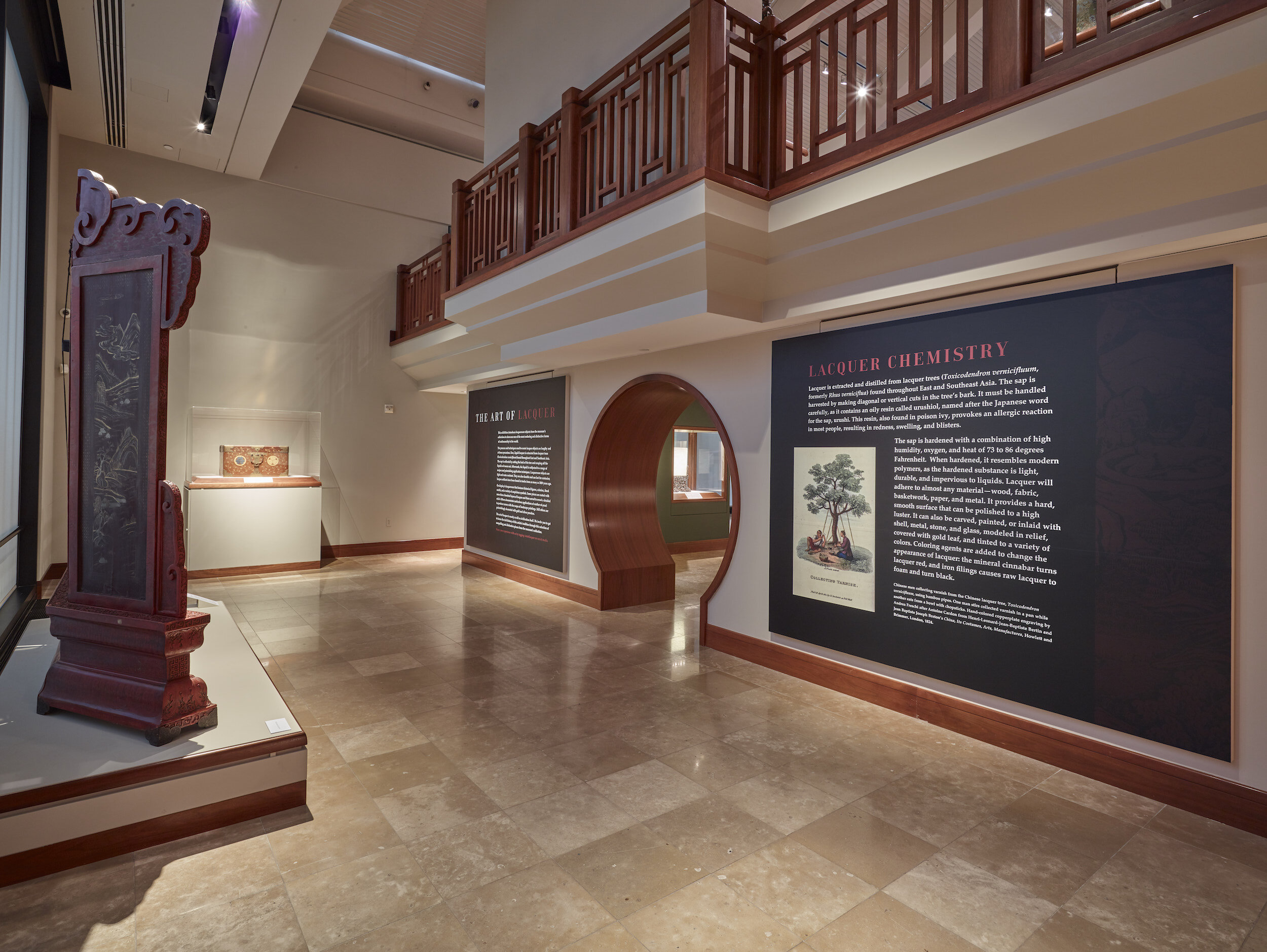
The Art of Lacquer
On view September 28, 2018 – March 13, 2022 at the Crow Museum of Asian Art
This exhibition introduces lacquerware objects from the museum’s collections to showcase one of the most enduring and distinctive forms of craftsmanship in the world.
The process and techniques used to create lacquer objects are lengthy and at times precarious. Raw, liquid lacquer is extracted from lacquer trees (Toxicodendron vernicifluum) found throughout East and Southeast Asia. The sap is collected by cutting the bark of the tree and scraping off the liquid as it oozes out. Afterwards, the liquid is subjected to a range of recipes and painstaking application techniques. Lacquerware objects are light and water resistant. They are also durable and can last for centuries; lacquer artifacts have been found in tombs from as many as 3000 years ago.
On display is lacquerware that features historical figures, scholars, floral motifs, and a variety of auspicious symbols. Some pieces are coated with more than a hundred layers of lacquer and then carved to reveal a detailed relief. Others demonstrate meticulous applications of mother-of-pearl to produce scenes with the scope of landscape paintings. Still others are painstakingly decorated with gold and silver powders.
The art of lacquer is nearly as old as civilization itself. We invite you to get to know the rich history of this artistic tradition through this selection of compelling and distinctive pieces from the museum’s collection.
The Art of Lacquer is organized by the Crow Museum of Asian Art and curated by Jacqueline Chao.
Header Image: Carved cinnabar lacquer box and cover with dragons amid waves, China, Qing dynasty (1644-1911), 18th-19th century. Carved cinnabar lacquer on metal base. Crow Museum of Asian Art, 1982.16. Courtesy of the Crow Museum of Asian Art.
Installation photography by Chad Redmon, Courtesy of the Crow Museum of Asian Art.





